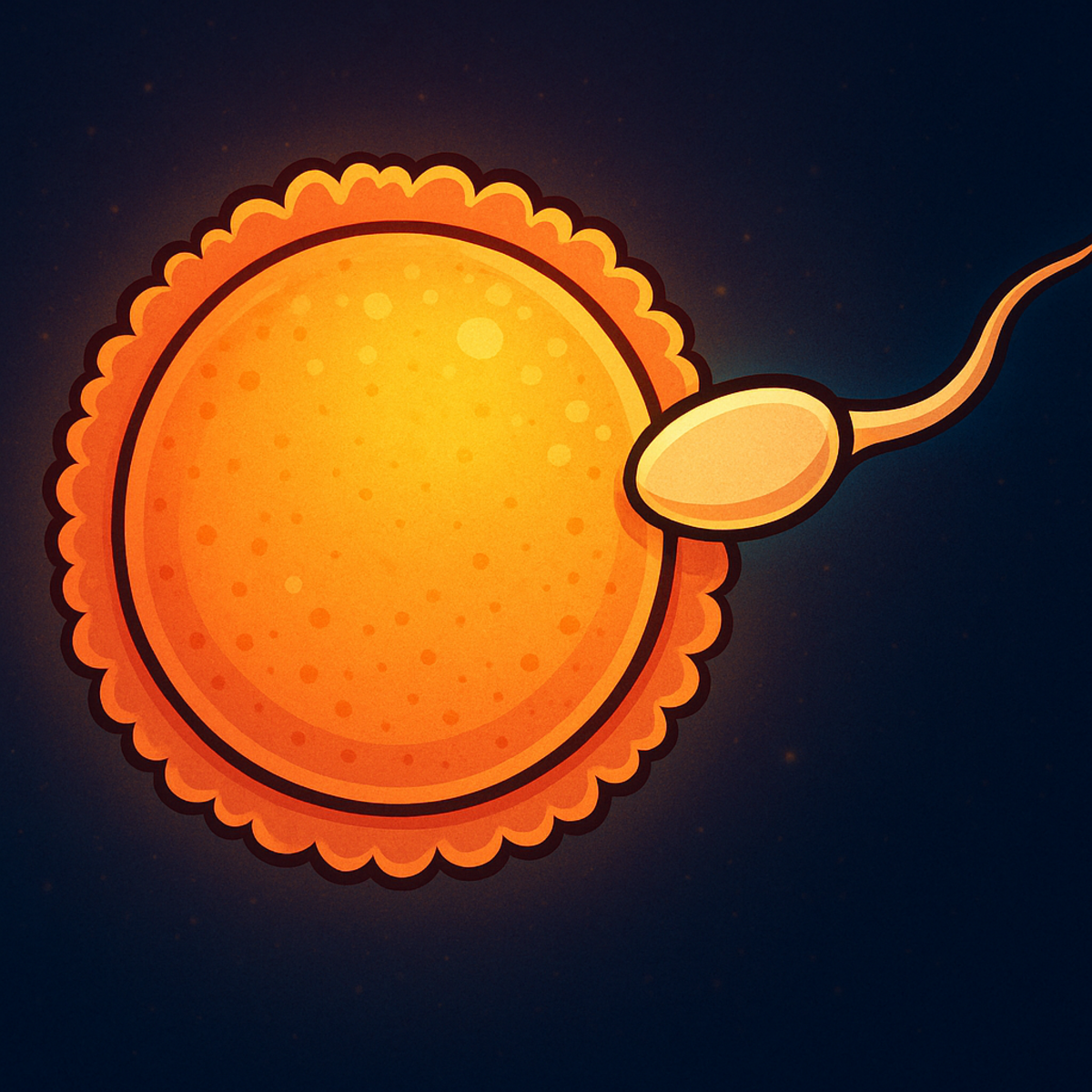The journey to conception culminates in a microscopic event of incredible precision and strength. For a new life to begin, a sperm cell must not only reach an egg but also form an unbreakable bond with it. Recent research has unveiled the remarkable mechanism behind this vital cellular handshake, revealing one of the strongest and most unique protein interactions in human biology.
The cellular lock and key: Juno meets Izumo
The initial attachment of sperm and egg occurs in the Fallopian tube and is mediated by two key proteins acting as a perfect lock and key:
Izumo: Found on the head of the sperm cell, named after a Japanese marriage shrine.
Juno: Located on the membrane of the egg cell, named after the Roman goddess of fertility and marriage.

For years, scientists understood that these two proteins fit together to initiate contact. However, new research from ETH Zurich and the University of Basel has revealed that their interaction is far more extraordinary than a simple lock and key.
A bond that strengthens under pressure: The "catch bond"
Most protein bonds behave like a simple handshake; the harder you pull, the easier it breaks. The Juno-Izumo pair, however, defies this convention. Using atomic force microscopy—a technique likened to two people linking middle fingers and pulling until the link breaks—scientists discovered that this pair forms a "catch bond." A catch bond is a type of molecular interaction where the connection actually becomes more stable and lasts longer when subjected to pulling or tensile forces.
"Under tensile forces such as those generated by the sperm, the binding becomes more stable rather than less," explains Professor Viola Vogel of ETH Zurich. This is the opposite of what we experience in daily life and is critical for the fertilization process.
A sperm's job isn't over when it reaches the egg. It must first fight through two protective layers—the cumulus oophorus and the zona pellucida—before it can even touch the egg's membrane. Once contact is made via Juno and Izumo, the strong catch bond serves a vital purpose: it buys time. While the sperm's flagellum (tail) is lashing wildly, the front remains firmly anchored. This stability is essential because the membranes of the sperm and egg need to reorganize themselves, becoming flexible enough to fuse together and form a single, new cell. This complex process can take several minutes, and without an ultra-strong bond, the sperm would be flung away.
The mechanical secret behind the strength
Through supercomputer simulations, researchers uncovered the physical mechanism of this catch bond. When a pulling force is applied:
Some initial atomic bonds between Juno and Izumo break.
This force causes the Juno protein to twist by about a quarter-turn.
This rotation brings new atomic surfaces into contact, forming fresh, stronger bonds.
This dynamic rearrangement under force allows the bond to resist breaking, making it one of the strongest adhesions known in multicellular organisms. Similarly robust bonds are found in muscle fibers to prevent tearing and in immune cells that need to cling to blood vessel walls.
A genetic mutation that weakens the bond
The study also provided a mechanical explanation for a known cause of infertility. A specific genetic mutation in the Juno protein, present in approximately 1 in 600 women worldwide, involves a change in a single protein building block. When the researchers tested this mutated Juno protein, they found that its catch bond with Izumo failed much more quickly under force. "This doesn’t give the sperm and egg cell enough time to initiate fusion or, therefore, fertilisation," states Professor Vogel. This discovery directly links the mutation to a mechanical failure in the fertilization process, paving the way for new diagnostic tests and potential therapeutic strategies to help affected couples.
References
Boult S, Pacak P, Yang B, Liu H, Vogel V, Nash MA. Force-dependent reorganization and mechanostability of the Izumo1:Juno complex involved in human fertilization. Nature Communications 2025. doi: 10.1038/s41467-025-62427-0
